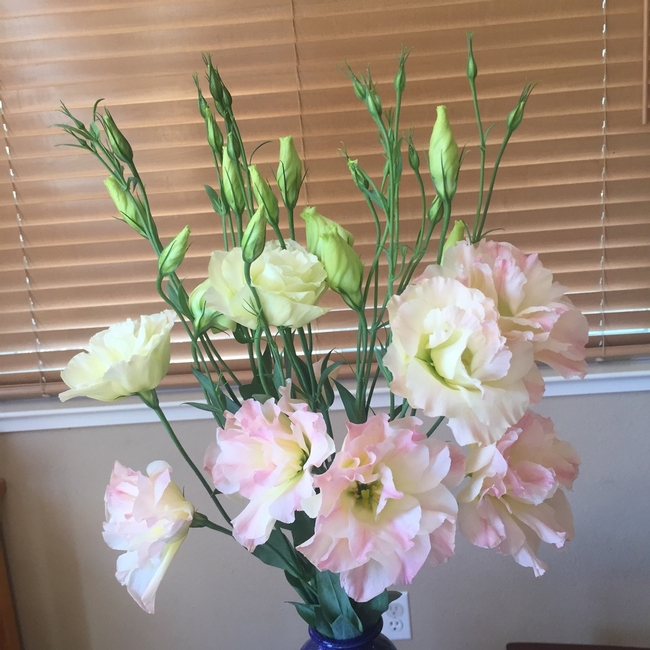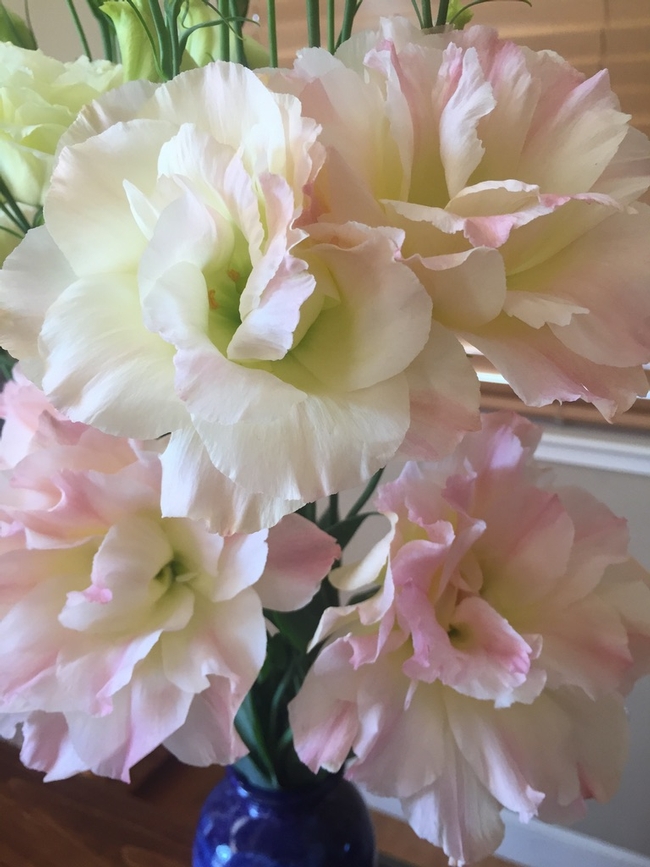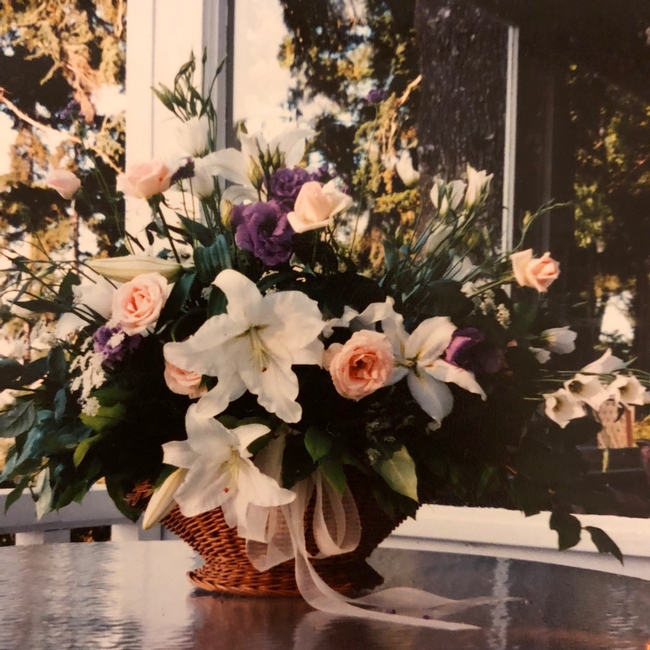- Author: Erin Mahaney
Sometimes a person connects with others in unexpected ways, creating enduring memories or sparking interests that the person will never know about. In my case, a near stranger introduced me to one of my favorite cut flowers.
One summer decades ago, I had an internship in an Oakland office with several other students. It was a busy time in part because I was getting married at the end of the summer, as was another intern. A gentleman who worked in the office, “Bob,” would stop by to briefly chat with us each day. Bob was close to retirement and didn't work directly with the interns, but he was always friendly and engaged, yet also professional. On the last day of our internship, he gave the female interns beautiful bouquets that included a striking purple flower that I had never seen before. When I inquired what it was, he responded “Lisianthus.” I loved it so much that I included it in my wedding bouquets that summer (see older photo).
Lisianthus (Eustoma Grandiflorum) is a long-stemmed, rose-like flower in the Gentianaceae family. Common names include Prairie Gentian, Texas bluebell, Tulip gentian, Bluebells and Lira de San Pedro. It is a wonderful cut flower with a long vase life, lasting up to 2 weeks or so. The flowers range from white to pink to purple with various shades in between, and also come in bi-color varieties. Even the buds are beautiful! The plant grows 1 to 3 feet tall and up to 14 inches wide, although there are also dwarf varieties.
I have found Lisianthus to be tricky to grow, and frankly, haven't had much success with it. It is generally grown as an annual plant and it is easier to grow from established seedlings or larger plants than from seeds. It requires rich, well-drained, moist soil in full sun and does not tolerate very acidic soil. The taller varieties may need staking. I have tried six-packs of seedlings on several occasions and they either get eaten by pests while young, don't bloom, or otherwise don't thrive. The one year I had my best success, the young plants ended up being partly shaded by other plants, so perhaps full sun is too much sun in our area. Nonetheless, I keep trying!
I later found out that Bob was diagnosed with cancer and passed away shortly after his retirement. I didn't stay in touch with him after my internship, but I often think of him when I see bouquets of Lisianthus. I think that is a nice way to be remembered – associating someone with a flower – and I hope that he would have thought so too.






